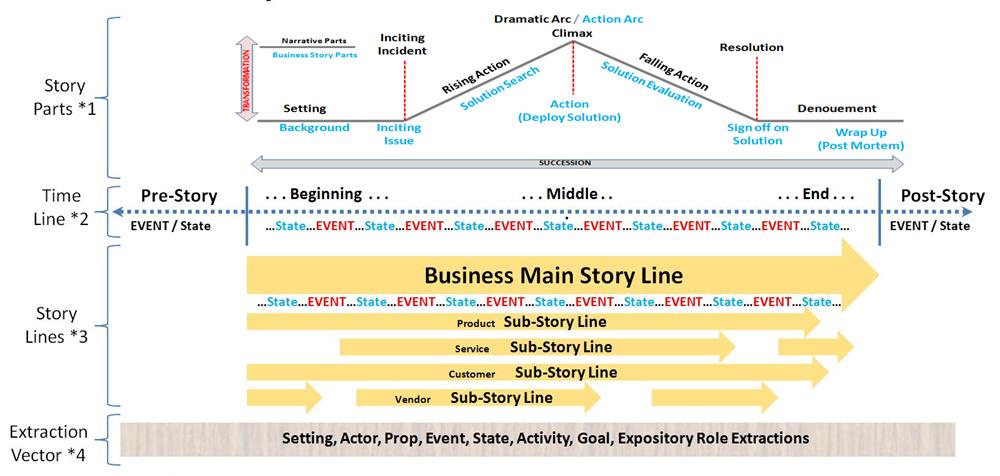Notes:
- Story Parts- these
are adaptations taken from Freytag's Pyramid with extentions from a
5-part structure, originally articulated by Freytag, to a 7-part
structure to accommodate business story-telling dynamics.
- Time Line
- this is the chronological sequencing of the story's alternating
Event-State sequences. Sometimes the story sequencing is
based on
Discourse Structure rather than Event (Chronological Structure)
depending on the author's rhetorical motives.
- Story Lines -
the text content usually tells a story that consists multiple
interwoven story lines, each line tracing the events and states of
actors corresponding to business products, services, customers,
vendors, employees, etc. Individual story-lines can be
extracted
to tell the story they encapsulate.
- Extraction
Vector
- each story line can be represented by a vector consisting of
story-line made up of story roles: Setting, Actor, Prop, Event, State,
Activity, Goal, and Expository information. The extraction vector
maintains the sequencing of information as it was captured from the
original text.
|
 NarraText
Business
Story Structure
NarraText
Business
Story Structure